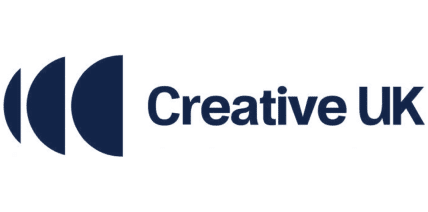Much is made of the future of this country as being a knowledge-based economy, but actually, the real prospects are to be found not just in developing technology (often swept away by overseas interests) but in creativity.
There’s empirical evidence. British designers are in demand worldwide, and UK creative companies are involved in prestigious, innovative work across the globe.
In a major report commissioned by WardWilliams Creative, we consider their approach to business, their specific qualities, their prospects, and give a view on how the UK can encourage creativity.
Leading up to publication of the report, we will be sharing the latest thought-provoking interviews with the businesses we are researching until the final report will be available to download. These reports and interviews have been compiled by Larry Dillner of Decision Magazine.
Table of contents
Creativity and weird ideas…
Creativity is all about “considering weird ideas to see if anything comes of them”, says Adrian Bennett, pondering the definition.
“It’s a filtering process,” continues the co-founder of industrial design consultancy Curventa. “We set out to generate as many ideas as possible and then filter them down through insight and observation. Every idea is initially given the opportunity to rise to the top but some will then hit the cutting room floor.”
Bennett says creative people have certain characteristics. “We are intrigued by things, and we are people watchers. Not only does that mean that we see a problem with out own eyes but we instantly start to think about how to solve it.”
That problem-solving aspect is the creative bit, he says. “It could be that a product works well but is ugly and because of that doesn’t maximise its potential. Or the problem could be related to the product’s functionality.”
Whatever the nature of the problem, it’s always the starting point of the process. “But we don’t create for creation’s sake; we don’t sit there with a bunch of people around the table and a blank sheet of paper and say ‘let’s innovate’,” says Bennett.
“It’s not like the musician’s second album syndrome, where you are the sole creator and the sole reason why the album will be what it is going to be. For us, our driver is a product for someone else, the client who comes to us with a brief. You can’t create in a vacuum; if there’s no starting point it’s almost impossible.”
The business, whose claim to fame is that “every two seconds someone in the world is using a product designed by Curventa,” was originally set up in conjunction with an American software company to develop new computer-aided design software that was easier to use. The software business subsequently folded but the design agency part continued.
“Every two seconds, someon in the world is using a product designed by Curventa.”
The business has always aimed to work across a wide spectrum of industries and product categories, because Bennett believes that cross-pollination of ideas and experiences can enhance every design solution.
“Knowledge is born out of the experience of different projects,” says Bennett, who set up the business with Ian Murison in 2001 with the aim of developing “elegant, disruptive, beautifully crafted, iconic, category defining products and brand experiences.”
“We never particularly wanted to work on mundane things,” he says. “We made a deliberate decision to pick projects that were disruptive or groundbreaking, that would give us a unique flavour.”
“We are intrigued by things, and we are people watchers. Not only does that mean that we see a problem with out own eyes but we instantly start to think about how to solve it.”
For example, he points out some snowboard helmets. “Normally snowboarders would wear separate goggles and a snood over their faces but we designed integral, removable, goggles and face cover as part of the helmets, and there’s an inbuilt airflow so that the goggles don’t mist up.”
Deconstrusting the creative process
Research is an important part of the process, says Bennett.
“There is no such thing as a stupid question. Sometimes if you don’t ask the obvious question you don’t get the right answer. Research is now seen by companies as more and more important, which means we’re finding it easier to sell research as a service, as opposed to something we just had to do as part of the design process. We look at how people react to the product, how will they deal with it when they take it out of the box.”
Working with a bakeware company, Curventa suggested researching what people needed in their kitchens. “We took Jamie Oliver’s 30-Minute Meals book and we went to people’s houses and filmed them cooking,” says Bennett. “We watched how they used the space in their kitchens.”
The resulting products included a measuring jug with straight sides that would fit snugly in the corner of a cupboard, so saving space. And a colander that turns on its side so that salad can be both washed in it and served from it.
Bennett says for a creative business, a personal rapport with the client is essential, so day-to-day client liaison is done by a senior designer who is actually involved with the work, rather than by a project manager.
One of the challenges, he says, is getting ideas through the client’s approval procedures.
“We can see where the opportunities might be, but it can be difficult for them to take that leap. Some will go with us on the journey but with others the different agendas within their organisation mean the route chosen takes us further away from what we see as the best outcome.”
Similarly, practical issues can be a hindrance.
“Designers will come up with a beautiful idea but getting it to the shelf, bridging the gap between the promise of an idea, the creative input, and a tangible output, involves a battle and lots of to-ing and fro-ing; not least the vagaries of commissioning tooling from the Far East.”
Future of Curventa
Having talked about how product development has always been driven by the client’s brief, Bennett reveals that a step change is coming.
The big-picture target for the next few years is for Curventa to become a product owner in their own right, effectively being their own client, developing products (and owning the intellectual property) without the restrictions of a client’s brief.
This is already being borne out: both Bennett and Murison are co-directors of a new company set up to manufacture a new vaporiser device. The process of product development will take the usual problem-solution approach, says Bennett.
“We’re looking at what people don’t like about vaping and the pain points of moving from smoking to vaping.”
In another departure, Curventa are working with a big brewery to design and manufacture an electronic fridge magnet app that automatically adds beer to the shopping list when there’s no more beer in the fridge.
The commercial arrangement means that the agency won’t just get paid for providing the design service but will also get a revenue share if the product is successful.
“There will be other opportunities to come out of that,” says Bennett. “The product idea is easily replicable in other sectors and as the hardware developers we are in a good position to be able to leverage this opportunity”
“Designers will come up with a beautiful idea but getting it to the shelf, bridging the gap between the promise of an idea, the creative input, and a tangible output, involves a battle and lots of to-ing and fro-ing; not least the vagaries of commissioning tooling from the Far East.”
On a commercial front, there is a fairly broad-brush approach to costing, with the partners disliking the rigidity of time-sheets. They tend to assign a certain amount of time to a project and that creates good discipline, which normally means the job is done without anyone having to work nights or weekends (something Bennett hates doing).
“We have deadlines and checkpoint times where we can see if we are on target. Everyone knows the timeframe to get the job done. If the budget is two weeks and we do it in that time then we know we will be in profit. If we happen to do it sooner than two weeks, we make a bit more profit.”
True value of creativity
And of course, sometimes it goes the other way, he adds, and they end up going over the allocated time. But what Bennett really dislikes is the way that many creatives are expected to work for free. In particular, he is “vehemently opposed” to doing free pitches when seeking new business.
“Some companies still think that creative agencies should pitch for free and my answer is: why don’t you ask Jamie Oliver or Gordon Ramsay or Michel Roux to cook you a meal and say ‘If I like any of those meals then I will pay for it, but only that one’. I will probably give you the same answer they will.”
One of the issues for product design agencies is that because they are creating something for a third party they don’t get the benefits of R&D tax credits; it’s the client who gets those advantages.
“If government understood better the services we provide, they could charge different levels of corporation tax to help businesses innovate and develop new products,” argues Bennett.
“The film industry gets tax relief to shoot here; if other creative industries had a similar opportunity it would make them more viable and it would benefit the economy as a whole.
Bennett believes the education system is “absolutely disastrous” in terms of encouraging creativity.
“Politicians talk about how successful our creative industries are, but the undermining that’s going on now, turning creative courses into structured academic courses, is strangling the sector. Jokingly, I often say I have never met a decent designer who can spell because so many are dyslexic. But the things they excel at are being stifled because the structure of education is geared towards being able to write reports.”
Meanwhile, he complains that too many students with indifferent design skills are being accepted onto college courses.
“When I was at college, the first year was like a boot camp and if you lasted that first year you knew you were doing well. Now that the universities are businesses, design courses are springing up left right and centre and they will take anyone. The universities just want to accumulate their nine grand a year in tuition fees in the future so they won’t be looking to fail too many students.”
Bennett sees opportunities to help the good young designers through some sort of incubator advisory or mentoring work, believing that having an influx of fresh talent helps to “mix things up.”
“As a company we have to understand the whole supply chain of manufacturing and marketing and we could do more to leverage that knowledge and provide the next generation with some amazingly valuable advice,” he says.
“But there are only so many hours in the day.”
You could also check out other ways to unfold your creativity, or other interviews like this, for example, with the founder of Lumico Design.








